Giacomo Triga (1674 - 1746) was an Italian painter, active in Rome, as a painter of religious subjects. He served for a time as court painter to the Marquis Gerolamo Theodoli.


Giacomo Triga (1674 - 1746) was an Italian painter, active in Rome, as a painter of religious subjects. He served for a time as court painter to the Marquis Gerolamo Theodoli.


Giacomo Triga was born in Rome into a family of Marche origins. His father was a bricklayer. Triga trained under Benedetto Luti. He subsequently became court painter for the Marquis Gerolamo Theodoli. The young Pietro Bianchi served as his apprentice. [1]
In 1715 he received a papal commission to paint the Meeting of Saints Ignatius and Polycarp for San Clemente al Laterano. In 1726 he painted the Martyrdom of Saint Paul for Santi Giovanni e Paolo al Celio. [2]
He painted a fresco depicting the Glory of San Nicola for the church of San Nicola ai Prefetti in Rome. The work was commissioned circa 1729-1730 by his patron, the Marquis Gerolamo Theodoli. [3]
The Marquis refurbished the family chapel at Santa Maria del Popolo The paintings were restored and refreshed by Triga. [1]
He was a member of the Accademia di San Luca and the congregation of the Virtuosi del Pantheon. Triga died in Rome in 1746.

Lorenzo Lotto was an Italian Renaissance painter, draughtsman, and illustrator, traditionally placed in the Venetian school, though much of his career was spent in other north Italian cities. He painted mainly altarpieces, religious subjects and portraits. He was active during the High Renaissance and the first half of the Mannerist period, but his work maintained a generally similar High Renaissance style throughout his career, although his nervous and eccentric posings and distortions represented a transitional stage to the Florentine and Roman Mannerists.
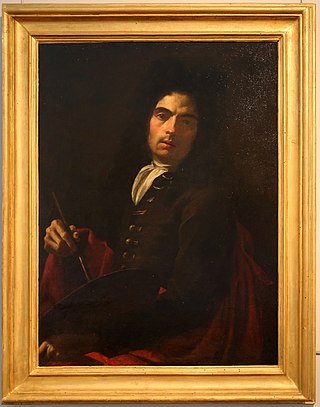
Corrado Giaquinto was an Italian Rococo painter.

Sant'Ambrogio e Carlo al Corso is a basilica church in Rome, Italy, facing onto the central part of the Via del Corso. The apse of the church faces across the street, the Mausoleum of Augustus on Via di Ripetta.

Giovanni Lanfranco was an Italian painter of the Baroque period.
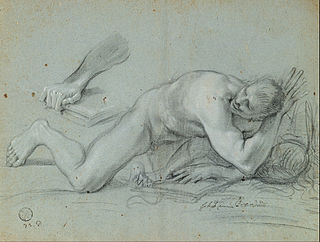
Giovanni Angelo Canini (1609–1666) was an Italian painter and engraver of the Baroque period.

There are more than 900 churches in Rome, which makes it the city with the largest number of churches in the world. Almost all of these are Catholic.

San Martino ai Monti, officially known as Santi Silvestro e Martino ai Monti, is a minor basilica in Rome, Italy, in the Rione Monti neighbourhood. It is located near the edge of the Parco del Colle Oppio, near the corner of Via Equizia and Viale del Monte Oppio, about five to six blocks south of Santa Maria Maggiore.

Girolamo Siciolante da Sermoneta began his career as an Italian Mannerist painter but later adopted the reformist naturalism of Girolamo Muziano in the 1560s and 70s. He was active in Rome in the mid 16th century.

The Basilica dei Santi Bonifacio e(d) Alessio is a basilica, rectory church served by the Somaschans, and titular church for a cardinal-priest on the Aventine Hill in the third prefecture of central Rome, Italy.
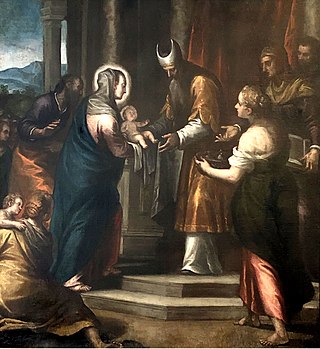
Alessandro Maganza (1556–1630) was an Italian painter of the Mannerist style, born and active in Vicenza, as well as in Venice.

Antonio d'Enrico, called Tanzio da Varallo, or simply il Tanzio was an Italian painter of the late-Mannerist or early Baroque period.

Giuseppe Nicola Nasini was an Italian painter of the Baroque period and active in Rome and Tuscany.

The Basilica of Saints John and Paul on the Caelian Hill is an ancient basilica church in Rome, located on the Caelian Hill. It was originally built in 398.

Giovanni Battista Benaschi, or Beinaschi, (1636–1688) was an Italian painter and engraver active in the Mannerist and Baroque style.
Marchese GerolamoTheodoli was an Italian nobleman and architect, best known for designing the Teatro Argentina in Rome.
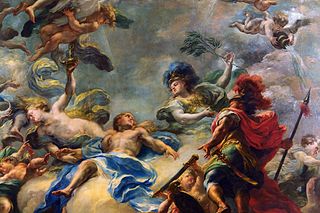
Giacomo del Pò, also spelled del Po, was an Italian painter of the Baroque. He was born in Palermo, the son of Pietro del Pò who was also his teacher.
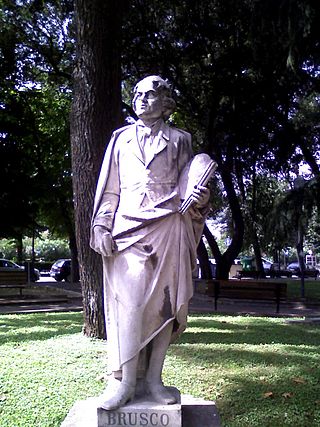
Paolo Gerolamo Brusco or Girolamo Brusco was a prolific Italian painter active in Liguria. He was also nicknamed Bruschetto.
Francesco Nasini was an Italian painter of the Baroque period, active mainly in towns outside of Siena, Italy.

The Theodoli Chapel or Chapel of Saint Catherine «del Calice» in the Basilica of Santa Maria del Popolo in Rome is an important monument of Roman Mannerism. Although less known than some of the other side chapels of the same church it is a major work in the oeuvre of Giulio Mazzoni. The chapel opens at the end of the left arm of the transept next to the famous Cerasi Chapel.

Valentino Rovisi was an Italian painter in a late Baroque style.